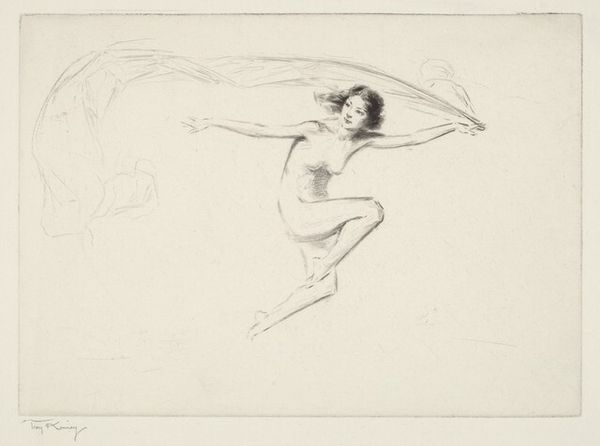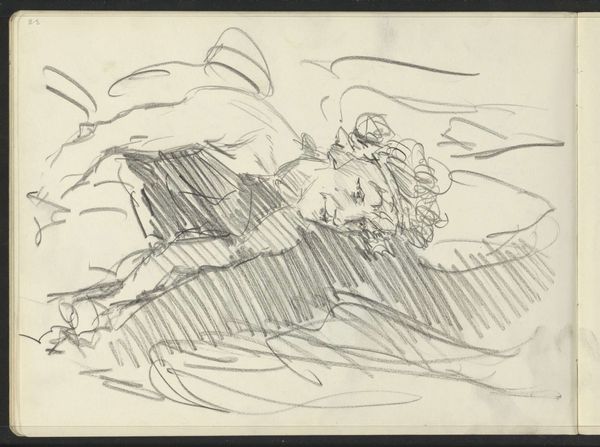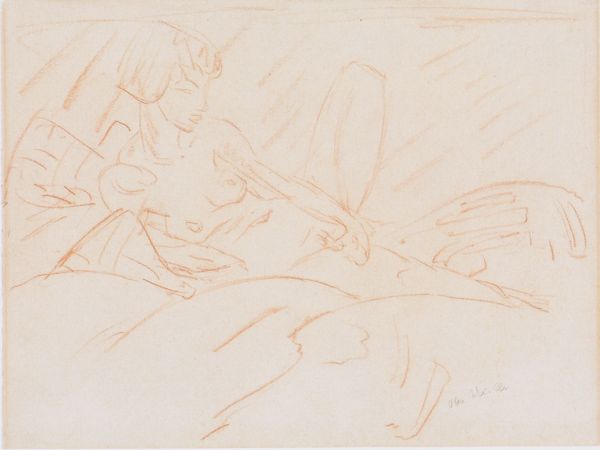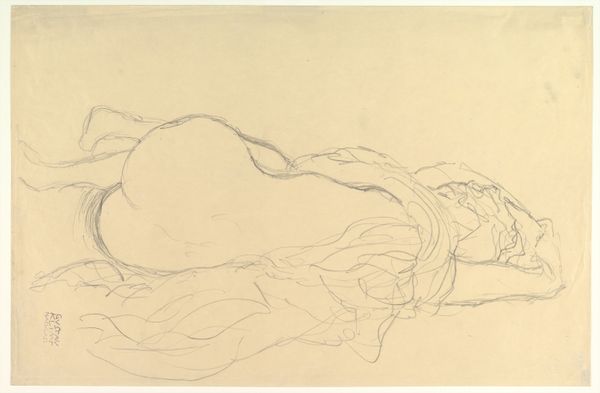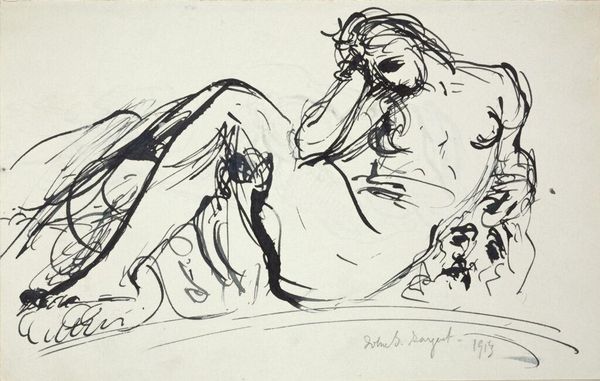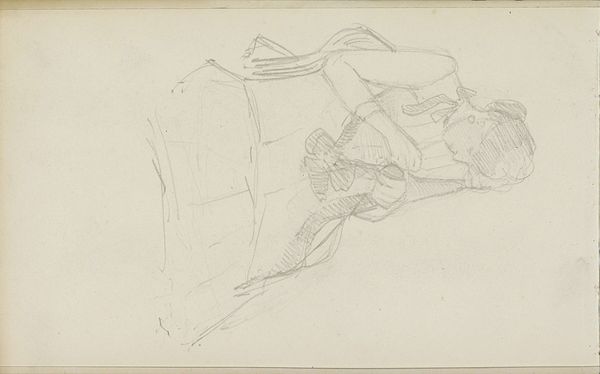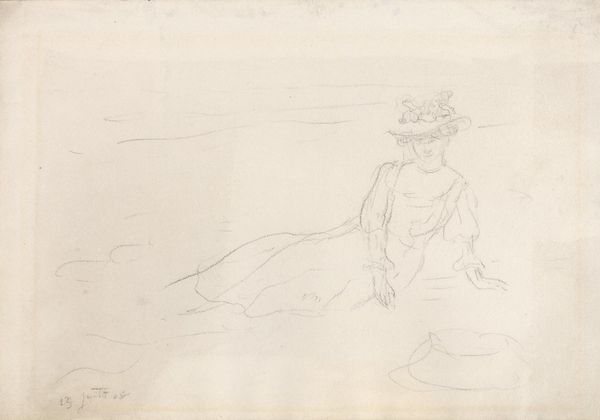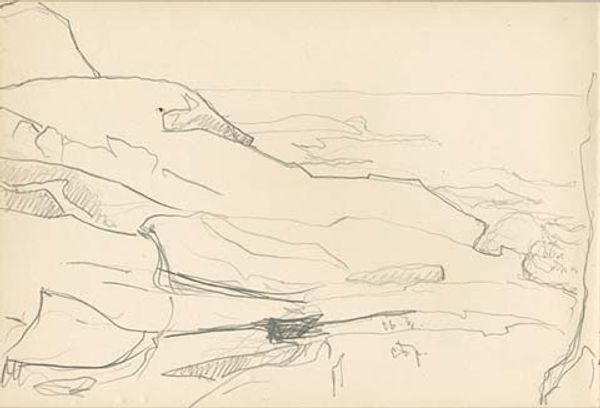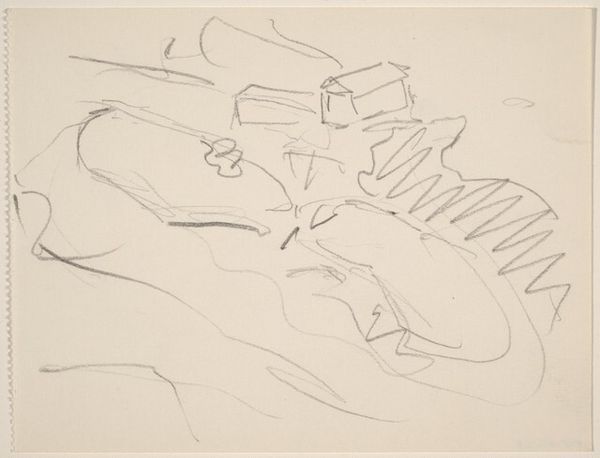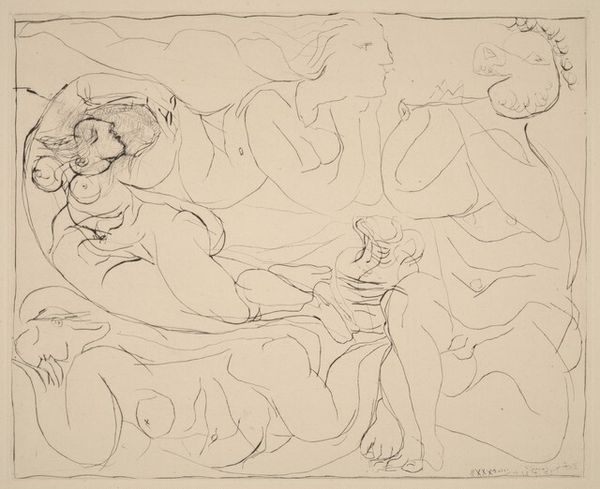
drawing, print
#
drawing
# print
#
landscape
#
figuration
#
nude
#
realism
Copyright: National Gallery of Art: CC0 1.0
Curator: Immediately striking, isn’t it? A figure captured in ink with such raw, unfussy energy. Editor: Yes, indeed. We're looking at "Suzanne on the Beach," a 1927 print by André Dunoyer de Segonzac. What might be called a study of repose. Segonzac uses the landscape as a classical tableau onto which he adds the figure of the resting woman. Curator: Repose, perhaps, but consider the gaze. It's direct, almost confrontational, clashing with the expected passivity of a nude subject at leisure. It reminds me of how Manet subverted such tropes, positioning women not just as objects of the male gaze but active participants in the scene. And of course, the very concept of the beach as a public space for leisure was newly democratized in this period, becoming associated with emerging ideas of female agency. Editor: I appreciate your contextualization. I'm immediately drawn to the angularity, however, in the composition. The lines seem almost brutal, economical in their execution but precise in their descriptive power. Segonzac uses only the bare minimum to create form, delineating light and shadow, mass and volume. Look at how the few curved lines hint at the shape of the straw hat, balancing the geometry. Curator: Brutal is one way to put it. Perhaps the very starkness reflects something of the period's anxieties. After all, we’re talking about interwar France—a moment where societal structures were still grappling with the fallout from global conflict and political realignment. How do you think her lack of adornment, her literal exposure, plays into those considerations? Is this an act of defiance? Or compliance? Editor: I would argue Segonzac seeks something more fundamental, pre-linguistic. By stripping away superficial detail he reveals the essential structures: bone, muscle, contour. Semiotics would see each stroke, each carefully placed mark as contributing to the sign that signifies “woman.” Curator: Hmm. Intriguing to frame the drawing as pure structure, yet even the act of rendering absence of details constitutes an implicit reading about who and what matters in the historical record. Editor: Perhaps, but the beauty of form cannot be denied here. Curator: Agreed. The drawing’s tensions reveal, and conceal. I am left to wonder if Suzanne would find satisfaction in our musings, decades after her likeness has become the vehicle for discussing artistic formalism and intersectional theory. Editor: Art creates such conversations, doesn’t it? We find ourselves as figures within its landscape too, grappling to better understand our position.
Comments
No comments
Be the first to comment and join the conversation on the ultimate creative platform.
